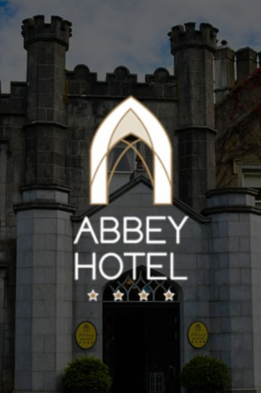What are the different types of hotel rooms?
Hotel room types are classifications that help guests understand exactly what they’re booking, varying by occupancy (single, double, triple), bed configuration (king, queen, twin), layout (standard, deluxe, suite), and special features (connecting rooms, accessible rooms, pet-friendly). Common categories include standard rooms, junior suites, executive suites, and presidential suites, with each type designed to meet specific guest needs and price points. Hotels use these classifications to optimize pricing strategies and target different market segments effectively.
Why should you know about room types in a hotel?
Room types in a hotel play a huge part in how a guest makes a booking, and even if they make a booking at all. It’s important to be offering room types that appeal to your ideal guest segment but also a broad range of guests. This will allow you to maximise occupancy and revenue.
Modern hotels are set up to welcome a wide variety of guests; from couples to families, business travellers and groups. This is reflected in hotel booking options, which provide for the differing needs of guests by offering a range of room types.
Single, double, queen, suite? The options available to provide guests with an experience that matches their needs go well beyond this list.
In this blog, we’ll explore the full range of hotel room types, so your hotel can set up and sell your rooms online more successfully. Table of contents
Why should hotels offer different hotel room types?
Hotels should offer different room types to target specific guest segments, maximize occupancy and revenue, and provide pricing options that appeal to diverse travelers. Multiple room categories allow properties to meet varying needs, from budget-conscious solo travelers to luxury-seeking families, all while enabling strategic pricing and inventory management. This approach helps hotels capture more bookings by ensuring every potential guest finds an option that matches their requirements and budget.
Room types can also be a powerful tool that supports your marketing strategy. Wanting to attract honeymooners to your hotel? Offering a “honeymoon suite” sends a message that your hotel is perfectly set up to offer a romantic and special experience for couples who’ve recently tied the knot.
Make more money from your hotel room types What if you could boost your hotel room revenue while also reducing your workload? Our smart hotel platform helps you do exactly that.
What are the most common hotel room types?
Overview of Hotel Room Type Categories:
- By occupancy: Single (1 guest), double (2 guests), triple (3 guests), quad (4+ guests)
- By bed size: Twin, queen, king, Hollywood twin configurations
- By layout: Standard, deluxe, studio, suite variations – By features: Accessible, pet-friendly, smoking/non-smoking designations
What are hotel room types by occupancy?
One of the most obvious and straightforward ways that hotel rooms can be categorised is by the number of people the room accommodates.
Single hotel room type
A single room is designed for one occupant and has one bed – generally a double or queen bed.
Double hotel room type
A room for two people, sometimes with two full-size beds and sometimes with a king or queen bed. The size of this room is usually larger than a single room.
Triple hotel room type
As the name suggests, the triple is a room that can accommodate three people, and will generally include three twin beds, one double bed and one twin bed or two double beds.
Quad hotel room type
A larger room that’s meant for four guests, and will have at least two double beds.
Some quad rooms may be set up with bunks or twins.
What are hotel room types by bed size?
Another way hotel rooms can be categorised and named is by reference to the size of the bed in the room.
Queen hotel room
A room with a queen-sized bed (generally 60 inches wide x 80 inches long, or 152.4 cm x 203.2 cm) which can be occupied by one or more people.
King hotel room
A room with a king-sized bed (generally 76 inches wide x 80 inches long, or 193 cm x 203 cm) which can be occupied by one or more people.
Twin hotel room
A room with two twin beds which can be occupied by one or more people.
Hollywood Twin hotel room
Similar to a twin room, however the two twin beds are joined together by a common headboard.
Double double hotel room
A room with two double or queen beds. It’s meant to accommodate two to four people.
Studio hotel room
A studio room is a small room that comes with a couch that can be converted into a bed and sometimes contains additional beds or a small kitchenette.
What are hotel room types by layout?
The size, design and arrangement of the room in a hotel can be used to create different room types.
What is a standard room in a hotel?
A standard room is one of the cheapest hotel rooms, and usually includes a double or queen bed. It’s usually a rectangular space with a private bathroom, a desk, an armchair or sofa and perhaps a cupboard and dressing table. Other basic facilities are provided and may include a media player, television, telephone and coffee and tea making facilities.
Deluxe room
A step up from a standard room in terms of room views (may have water or city views, for example), location, furnishings and amenities. These rooms often have a balcony, more luxurious bathroom and are also a little more roomy generally.
Suite or executive suite
A suite is generally a larger space with separate bedroom areas connected to a living room. This type of room may also include a kitchenette.
Mini suite or junior suite
A mini suite is a single room with a bed and sitting area.
Presidential suite
Presidential suites are the most luxurious – and expensive – rooms in a hotel. There are generally only one or two of these, if any, within an entire hotel. This suite will boast an expansive floorplan with one or more bedrooms, a living space, a long list of amenities and custom services.
What is a guest room in a hotel?
A guest room usually refers to any type of room that isn’t a suite.
Apartment and long stay
Rooms with full kitchens, laundry facilities and other amenities that allow guests to stay comfortably for extended periods of time.
Connecting rooms
Rooms with separate entries from the outside and a connecting door between the rooms so guests can move between rooms without going out into the hallway. Great for families or groups.
Adjoining or adjacent rooms
Rooms with a common wall or rooms that are close to each other. These rooms do not have a connecting door.

What are all the different hotel room types available?
The full list of hotel rooms is endless, and bound only by a hotelier’s creativity.
While rooms are commonly categorised by occupancy, bed size and layout – as described above – they can be categorised by amenities, who the room is most suited to, what’s included, the unique style of room or anything else that helps give guests an idea of what to expect when they book that room.
Some other rooms you might see on a hotel’s booking website include:
Accessible room
A room designed to meet the specific needs of guests with a disability or guests whose stay might be made more comfortable with additional assistance.
Room only
Room only refers to a room rate that is exclusive of breakfast or any other add ons.
It can also used to refer to hostels, bed and breakfasts and dorm-style hotels that include a room only, with the bathroom, kitchen and living spaces shared between guests.
Pet-friendly room
A hotel may allow all or some rooms to accommodate certain types of pets or service animals.
Villa, cabana, cabin or bungalow
These are just some of the names resort-style hotels may use for stand-alone rooms, rooms with private or adjoining pools, beach-side rooms and similar.
Executive room
These rooms may come with bigger desks and other perks and be located close to the hotel’s guest office amenities.
Smoking/Non-smoking room
Rooms may be designated to allow or restrict smoking inside the room.
Integrate to SiteMinder’s vast ecosystem
Connect to SiteMinder’s extensive network of technology systems and partners to maximise your efficiency, bookings, and revenue.
Learn More
How should you name your hotel room types?
Giving your hotel room types names that go beyond numbers or simple descriptors can be a good idea because it opens up a whole new way of engaging guests, convincing them to book, and building their anticipation.
Here’s why you think about giving your hotel room types creative names:
Enhanced creativity and marketing: Room names can be a powerful marketing tool. As we mentioned earlier, “Honeymoon Suite” conjures up images of romance and luxury, making it more appealing than the average room.
Plus, it also makes it clear who the room is appropriate and designed for. In other instances, combining a type with a name can be useful. For example, a descriptive name like “Ocean View King” clearly communicates the room’s features and targets specific guest preferences.
Creates a more memorable and shareable experience: People tend to remember experiences better than numbers or generic names, and are more willing to talk about them too. A stay in “The Snow Slope Vista” becomes a story to tell friends and family, and to broadcast on social media.
Increased revenue potential: Desirable names and rooms with specific themes may be more appealing to guests and thus drive a higher price than other room types. Guests will also expect this too, so there shouldn’t be any friction. For instance, if a guest is looking to book “The Captain’s Cabin”, they will know it’s a higher rate and standard than the “Crewman’s Bunk.”
Of course, if you do come up with creative names for your hotel rooms, you still need to ensure the guest knows what they’re paying for. It’s important to accompany names with accurate and detailed room descriptions, which we’ll get to next.
Stay ahead with realtime pricing intelligence
Get daily pricing recommendations and market alerts delivered to your mobile, so you can instantly capture every revenue opportunity.
Learn more
What is a hotel room description?
A hotel room description provides details to a potential guest about what is included in a particular hotel room. The description will usually include information such as how many beds and what types are in the room, any special features, and there may also be information about cancellation policies or other inclusions.
The hotel room description should allow the guest to make a fully informed booking decision by knowing if it suits their individual requirements and preferences.
How you write your room description is up to you – include the essential details in a clear and concise manner to make it easy for guests to scan, or make it a mini-sales pitch and invoke the imagination of your potential customers.
Hotel room description examples
Ultimately, your room descriptions should be ‘on brand’ and match the way you speak about your hotel in other areas of your website. If you are a luxury property with elegant imagery and flowery language, then your room descriptions should align with this, while still providing guests with the information they need.
If you’re a budget hostel that offers travellers the essentials at a fair price, then you don’t need to sell them on too much because they are probably only looking for a bed, shower, and food.
If we look at a couple of examples from Kimpton Margot Sydney and Taj 51 Buckingham Gate Suites and Residences:
- Kimpton gets straight to the point and lists the size of the room, along with guest occupancy, smoking restrictions, and a full list of available amenities.
- Taj is more descriptive and expansive with its descriptions to indicate who the room would suit and why, while providing a more condensed list of amenities.
Standard or generic descriptions have broader appeal, while being more creative or prescriptive might have a narrower, but potentially stronger, appeal.
For example, if you are trying to sell a room for one guest who may plan to work during their stay, you could take a couple of different approaches:
- Standard double room
Ideal room for those who want a quiet, productive, stay.
200 sq. ft
One comfortable queen bed
Flat-screen TV with cable channels
Private bathroom with complimentary toiletries
High-speed Wi-Fi access
Work desk with ergonomic chair
- Writer’s retreat
Immerse yourself in comfort and quiet as you melt into a design that is perfect for creativity and concentration.
With a soft queen bed, large windows allowing for natural light, a spa-inspired bathroom, and a dedicated workspace suited for long hours, you’ll be kicking your goals in no time.
Enjoy free high-speed Wi-Fi and flat-screen TV for when you need a break.
While option 1 has broader appeal and is easier to write, option 2 may seem more enticing to guests and could be worth the extra thought and effort!
Other hotel room description ideas
When preparing to create your hotel room descriptions, pay attention to these ideas to ensure you are incentivising guests to book:
- Always include features: Guests absolutely need to know what they’ll be sleeping on, how much space they’ll have, what type of bathroom is included, what entertainment is available, if they’ll have a view, and more.
- Talk about benefits or purposes: Is the room particularly suited to families, is it designed for pure relaxation, is it a hideaway perfect for productivity, is it supposed to inspire romance?
- Make it standout: Building themes around your room types and descriptions will always catch the eye of guests and help them choose a stay that matches their mood or motivation.
- Don’t leave too many unanswered questions: Is the room accessible to those with a disability? What’s the cancellation policy? Is breakfast included? Are pets, children, and smoking allowed?
- Don’t forget photos: It almost goes without saying, but high-quality photos are essential to include alongside your descriptions so guests can see that they are indeed going to get what is promised and what they pay for.


